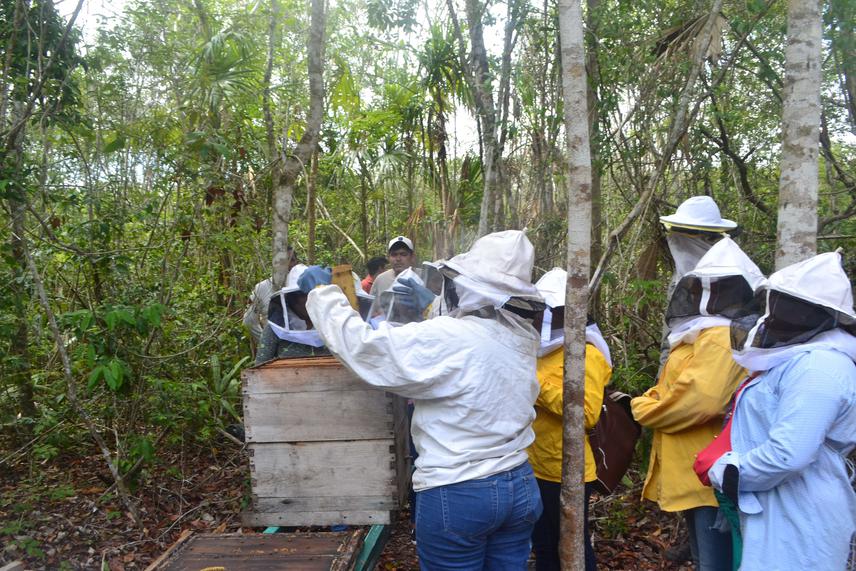Cristina Argudin Violante
Other projects
8 May 2019
Evaluating Honey Production as a Sustainable Complement to Livelihoods for Forest Communities in the Calakmul Biosphere Reserve
Mexican tropical forests are a hotspot of hunting-induced defaunation. I aim to evaluate the integrity of the ecosystem in the Calakmul Biosphere Reserve and to facilitate the uptake of sustainable hunting practices among the rural communities that live in the buffer zone of the reserve. I will interview farmer-hunters about their practices and interpret their hunting experiences in relation to distributions of wild-game species and gunshot frequencies in communal forests, detected by grids of camera-traps and acoustic sensors. Through participatory mapping and scenario planning, I will initiate a process of change towards informed self-policing of sustainable hunting practices that safeguards ecosystem function and food security.

Mexican tropical forests are amongst of the world’s hotspots of hunting-induced defaunation. Up to 70% of meat consumed by Mexican rural villages originates from hunting. This activity has profound implications for biodiversity, ecosystem function, and human livelihoods.
The Calakmul Biosphere Reserve (CBR) encompasses the largest region of intact tropical forests outside the Amazon. Fifty-two rural communities totalling 29,000 inhabitants live in the buffer zone of the CBR, where they depend on natural resources provided by these forests. Hunting functions as a supplementary livelihood in the CBR. Over 60 vertebrate species are continuously extracted for subsistence purposes in the Yucatan Peninsula.
This project aims to evaluate the ecological integrity of the CBR ecosystem, using the jaguar as an indicator of ecosystem health. I will evaluate the long-term viability of apiculture and hunting, by supporting a start-up group of women apiculturists (trained by me in 2019), and by starting a process of nudging the attitudes of farmer-hunters men towards evidence-based sustainable practices.
I will work within the buffer zone of the CBR, in three rural communities that differ in habitat type, degree of disturbance, ethnic composition, and distance to the main urban centre. I will run camera-trap surveys of jaguars and game species in areas near to human settlements and human activity. I will equip each camera with an acoustic sensor (AudioMoth) to quantify shotgun frequencies in these forests. Surveys will run for 12 weeks in three camera-trap grids.
I will interview men and women living in these three communities. This survey will explore how and why they use game species in the context of their perceived social, economic and environmental conditions. After the interview process, I will run three workshops (one in each community) to initiate a process of change towards informed self-policing of sustainable hunting practices that safeguards ecosystem function and food security. Through participatory mapping and scenario planning, I will build community cohesion; engage participants in resource decision-making and raise awareness about the impacts of hunting.
Additionally, I will focus on long-term livelihood sustainability of apiculture as an alternative to cattle ranching – a growing activity in the CBR -. I will organise a workshop with women honey producers to provide training and support in the legal establishment of an enterprise to mitigate cattle ranching expansion.